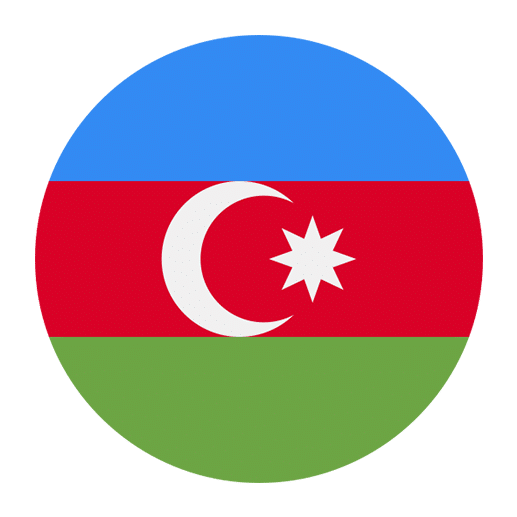Azerbaijani, also known as Azeri, is a Turkic language spoken primarily in Azerbaijan and Iran. For English speakers who are learning Azerbaijani, one of the more challenging aspects can be understanding how articles function in the language. Unlike English, which uses “the” and “a/an” to indicate definite and indefinite nouns, Azerbaijani does not have direct equivalents for these articles. However, the language employs different mechanisms to convey definiteness and indefiniteness.
In this article, we will delve into the nuances of definite and indefinite articles in Azerbaijani, helping you grasp how to properly use them in various contexts. By the end of this piece, you should have a clearer understanding of how to express definiteness and indefiniteness in Azerbaijani, as well as some practical tips to apply this knowledge in your language learning journey.
Understanding Definiteness and Indefiniteness
Before we explore how Azerbaijani handles articles, it’s essential to understand the concept of definiteness and indefiniteness. In English, definiteness is marked by the definite article “the,” which specifies a particular noun that is known to the speaker and listener. For example, “the book” refers to a specific book that both parties are aware of. On the other hand, indefiniteness is marked by the indefinite articles “a” and “an,” which introduce a noun without specifying it as something known. For example, “a book” refers to any book, not a specific one.
Definiteness in Azerbaijani
In Azerbaijani, definiteness is not marked by a specific article. Instead, it is usually inferred from the context. When a noun is definite, it often appears with additional context that makes its identity clear to both the speaker and listener. Here are some ways definiteness can be conveyed in Azerbaijani:
1. Contextual Clarity: Often, the context in which a noun is used makes it clear that it is definite. For example:
– Kitabı oxudum. (I read the book.)
In this sentence, “kitabı” (the book) is understood to be definite because the context suggests that both the speaker and listener know which book is being referred to.
2. Demonstrative Pronouns: Demonstrative pronouns such as “bu” (this) and “o” (that) can be used to specify a particular noun, thus making it definite:
– Bu kitabı oxudum. (I read this book.)
– O kitabı oxudum. (I read that book.)
3. Possessive Constructions: Possessive constructions also add definiteness to a noun:
– Mənim kitabım (My book)
4. Specific Modifiers: Adjectives and other modifiers can specify a noun and render it definite:
– Qırmızı kitab (The red book)
Indefiniteness in Azerbaijani
Indefiniteness in Azerbaijani is indicated through different means, often relying on verb forms or additional words to express that a noun is indefinite. Here are several methods to convey indefiniteness:
1. Absence of Specific Markers: The absence of specific markers often indicates that a noun is indefinite. For example:
– Kitab oxudum. (I read a book.)
Here, “kitab” (book) is indefinite because it is not specified which book is being referred to.
2. Indefinite Quantifiers: Words like “bir” (one) can be used to indicate that a noun is indefinite:
– Bir kitab oxudum. (I read a book.)
3. Use of Verbs: Verb forms can also imply indefiniteness. For example:
– Kitab oxumaq istərdim. (I would like to read a book.)
4. Lack of Contextual Clarity: Sometimes, the lack of contextual clarity makes it clear that the noun is indefinite:
– Evdə it var. (There is a dog in the house.)
Examples and Practice
To solidify your understanding, let’s examine some sentences and identify whether the nouns are definite or indefinite based on the context and markers used.
Definite Examples:
1. Mənə kitabı ver. (Give me the book.)
2. O maşın çox sürətlidir. (That car is very fast.)
3. Mənim qələmim itdi. (My pen is lost.)
4. Qırmızı paltar çox gözəldir. (The red dress is very beautiful.)
Indefinite Examples:
1. Bir kitab aldım. (I bought a book.)
2. Maşın sürmək istəyirəm. (I want to drive a car.)
3. Evin qabağında pişik var. (There is a cat in front of the house.)
4. Bir dostum mənə zəng etdi. (A friend called me.)
Special Cases and Nuances
While the general rules above cover most situations, there are some special cases and nuances to be aware of when dealing with definiteness and indefiniteness in Azerbaijani.
1. Plural Nouns: Plural nouns in Azerbaijani can be either definite or indefinite based on context and modifiers. For example:
– Kitablar (Books) – This can be definite or indefinite depending on context.
– Bu kitablar (These books) – Definite
– Bir neçə kitab (Some books) – Indefinite
2. Specific Contexts: In specific contexts, the meaning can change subtly. For example:
– Mən kitab oxuyuram. (I am reading a book.)
– Mən kitab oxuyuram. (I am reading the book.) – With different emphasis, this can imply the book is known.
3. Numerals and Quantifiers: Numerals and quantifiers can affect whether a noun is definite or indefinite:
– Üç kitab oxudum. (I read three books.) – Indefinite
– Üç kitabı oxudum. (I read the three books.) – Definite
Practical Tips for Learners
As you continue learning Azerbaijani, here are some practical tips to help you master the use of definite and indefinite articles:
1. Pay Attention to Context: Context is crucial in Azerbaijani for understanding whether a noun is definite or indefinite. Always consider the surrounding words and the overall situation.
2. Practice with Native Speakers: Engaging in conversations with native Azerbaijani speakers can provide you with real-world examples and help you get a feel for how definiteness and indefiniteness are naturally expressed.
3. Use Demonstratives and Possessives: When in doubt, use demonstrative pronouns (bu, o) and possessive constructions to make your nouns definite. This can help you communicate more clearly.
4. Read and Listen: Immersing yourself in Azerbaijani literature, news, and media can expose you to various ways that definiteness and indefiniteness are used. Pay attention to how native speakers structure their sentences.
5. Practice Writing: Writing sentences and short paragraphs in Azerbaijani can help reinforce your understanding. Try to use both definite and indefinite nouns in your writing practice.
Conclusion
Understanding how to convey definiteness and indefiniteness in Azerbaijani is a crucial step in mastering the language. While Azerbaijani does not use articles in the same way English does, it has its own methods for indicating whether a noun is specific or general. By paying attention to context, using demonstrative pronouns and possessive constructions, and practicing regularly, you can become proficient in expressing definiteness and indefiniteness in Azerbaijani.
Remember, language learning is a journey, and making mistakes is a natural part of the process. Keep practicing, stay curious, and you will continue to improve. Happy learning!

